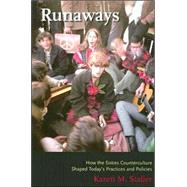Runaways
, by Staller, Karen M.- ISBN: 9780231124102 | 0231124104
- Cover: Hardcover
- Copyright: 7/30/2006
During the 1960s and 1970s, runaways became a source of national concern in America. Countercultural activists provided support to runaway youth, and private agencies began developing innovative, sometimes controversial programs to serve them. In this multilayered history, Karen M. Staller examines the programs and policies that took shape during this period and the ways in which the ideas of the alternative-services movement continue to guide our responses to at-risk youth.Staller begins with the 1960s, when the mainstream media began to characterize the act of running away less as an opportunity for exciting adventure (as experienced by Huckleberry Finn) and more as a temptation with dangerous consequences. She then turns to the books, poems, broadsides, and songs produced by Beat writers and countercultural meccas like Haight Ashbury and New York City's East Village, which embraced runaways as kindred social revolutionaries. Adopting the ideology of the Beats, groups like the San Francisco-based Diggers established informal services utilized by runaway adolescents, including crash pads and helplines. Many of their ideas took root, and alternative providers began to bridge the gap between counterculture and mainstream institutions.Staller concludes with an analysis of how the legislative desire to decriminalize running away, coupled with the judicial system's growing discomfort with policing the moral and civic education of youths, led to an increase in the number of troubled children appearing on the streets. It also prompted the enactment of federal runaway youth legislation, including the Runaway Youth Act of 1974, which endorsed the alternative-service community's model.By looking at the history of runaways, Staller illuminates how the mainstream media and countercultural ideologies shaped the identity and perception of this social problem and how developments in service and social policy continue to evolve today.







